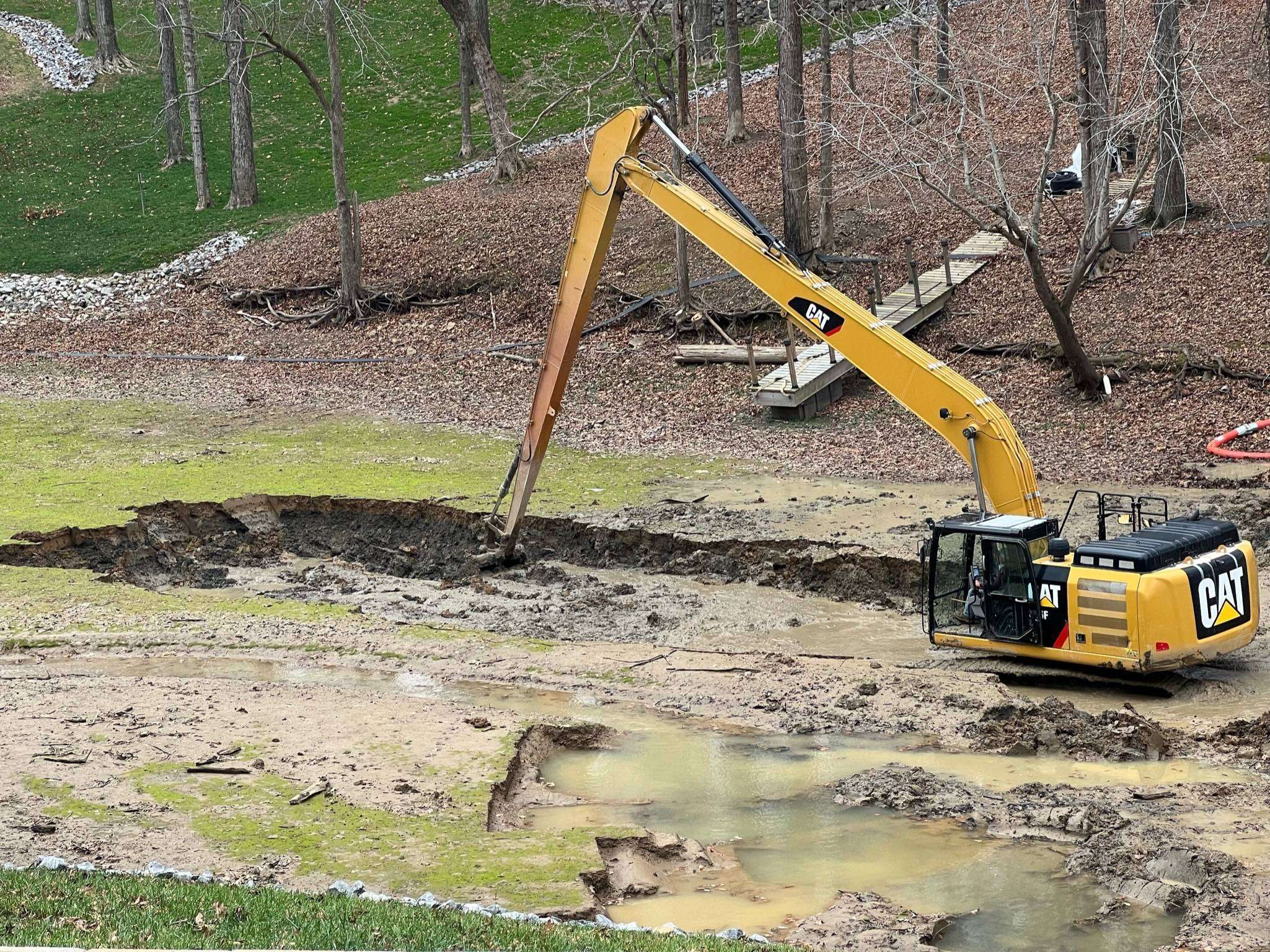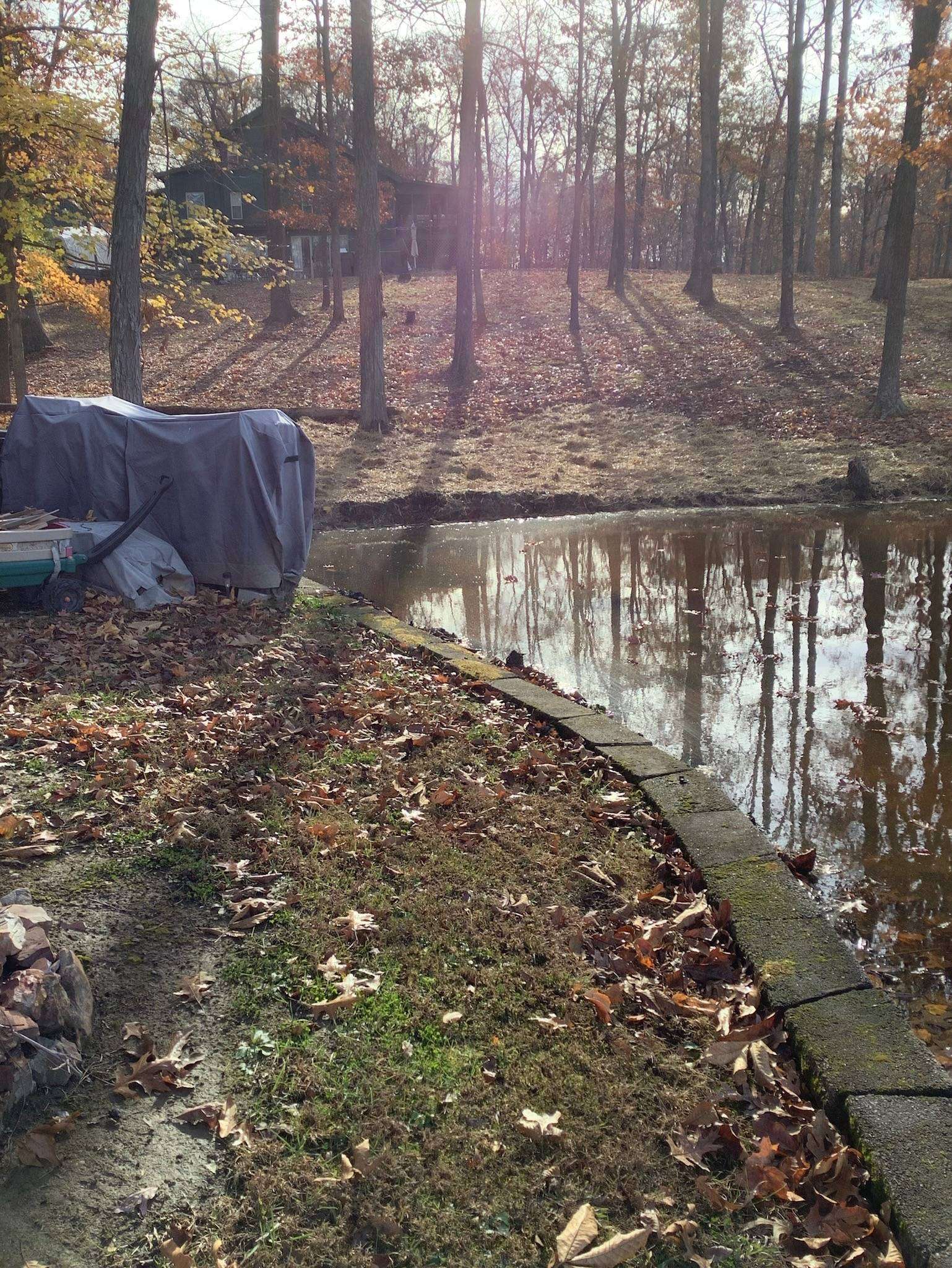Erosion control grants play a crucial role in helping communities and organizations combat the damaging effects of erosion. These grants provide financial assistance to support projects aimed at preventing erosion and protecting the environment.
From federal grants to private funding opportunities, there are various types of grants available for those looking to implement erosion control measures. In this article, we will explore the importance of erosion control grants, the benefits they offer, how to apply for them, and the steps to increase your chances of success.
Whether you are a local government agency, non-profit organization, or individual landowner, understanding the world of erosion control grants can make a significant difference in preserving our natural landscapes.
Key Takeaways:
- Erosion control grants are funding opportunities provided by federal, state, and private organizations to help individuals and organizations implement erosion control measures.
- These grants are important because erosion can cause damage to the environment, infrastructure, and economy, and implementing control measures can prevent or minimize these impacts.
- To apply for erosion control grants, individuals and organizations must meet eligibility requirements and submit a strong proposal that includes necessary documents, such as project plans and budgets.
What Are Erosion Control Grants?
Erosion control grants are financial assistance programs aimed at supporting projects that focus on mitigating shoreline erosion, promoting green infrastructure, and enhancing water infrastructure development.
These grants play a crucial role in funding initiatives that seek to reduce the negative impact of erosion on landscapes and water bodies while prioritizing sustainable and environmentally-friendly solutions. The Environmental Protection Agency (EPA) and other agencies administer these grants to address erosion issues, protect critical habitats, and improve water quality. By providing financial support to communities, these programs enable the implementation of innovative erosion control strategies that not only improve infrastructure resilience but also enhance overall environmental health.
Why Are Erosion Control Grants Important?
Erosion control grants play a vital role in safeguarding communities against the detrimental effects of shoreline erosion by providing essential resources and securing federal funding sources for sustainable infrastructure projects.
The allocation of resources through these grants is crucial for the implementation of effective erosion control measures, ensuring the protection of coastal areas from erosion-related risks. With a focus on bolstering community resilience, these grants facilitate the development of innovative solutions and the adoption of best practices in erosion management. By leveraging federal funding sources, local authorities can work towards enhancing environmental sustainability and mitigating the impact of erosion on ecosystems and habitats.
What Are The Benefits Of Erosion Control Grants?
Erosion control grants offer numerous benefits such as promoting nature-based solutions, supporting coastal programs, and contributing to initiatives like the Great Lakes Restoration Initiative through sustainable environmental finance mechanisms.
One significant advantage of erosion control grants is their ability to incentivize the implementation of sustainable erosion prevention techniques, thereby reducing the negative impacts of soil erosion on our coastlines. This proactive approach not only protects critical habitats but also enhances the overall resilience of coastal communities against natural disasters.
These grants play a key role in supporting regional initiatives like the Great Lakes Restoration Initiative by providing essential funding for projects aimed at restoring and preserving the ecological health of these vital water bodies. By aligning with such programs, erosion control grants contribute to a more comprehensive and cohesive effort towards environmental conservation and sustainable development.
How Can One Apply For Erosion Control Grants?
Applying for erosion control grants involves adhering to specific application deadlines, outlining proposals for projects like public beach restoration, and entering into grant agreements to formalize funding commitments.
Meeting application deadlines is crucial as late submissions are usually disqualified, jeopardizing the chance of securing vital funding for projects. Organizations must meticulously outline their proposals for activities such as public beach restoration, including details on the scope, budget, timeline, and expected outcomes.
Once the application is submitted, successful applicants proceed to the next phase, which involves finalizing grant agreements to solidify the terms and conditions of the funding. These agreements typically outline the responsibilities of the grantee, reporting requirements, and the disbursement schedule.
What Are The Eligibility Requirements For Erosion Control Grants?
Eligibility requirements for erosion control grants may vary but commonly involve criteria set by entities like the Green Infrastructure Federal Collaborative, Department of Energy, and programs such as Building Resilient Infrastructure and Communities.
Organizations such as the Green Infrastructure Federal Collaborative often focus on promoting sustainable practices and innovative solutions for addressing erosion challenges. In contrast, the Department of Energy may emphasize the integration of renewable energy sources into erosion control projects to enhance long-term environmental benefits. Adhering to the guidelines outlined by these prestigious bodies not only demonstrates a commitment to best practices but also aligns applicants with broader initiatives like the Building Resilient Infrastructure and Communities program, thus increasing the likelihood of securing erosion control grants.
What Documents Are Needed For The Application Process?
The application process for erosion control grants necessitates documents such as project proposals, financial statements, and references, which can be sourced from databases like NOZAsearch, Foundation Directory Online, and organizations like the National Fish and Wildlife Foundation.
Project proposals are crucial as they outline the scope, objectives, and strategies for erosion control initiatives. Financial records demonstrate the financial stability and transparency of the project. References add credibility by showcasing expertise and past accomplishments.
NOZAsearch provides a comprehensive database of philanthropic activities, making it easier to identify potential funders. Foundation Directory Online offers insights into various grant opportunities and guidelines.
The National Fish and Wildlife Foundation plays a pivotal role in guiding applicants through the grant application process, providing resources, mentorship, and funding support for environmentally sustainable projects.
What Are The Types Of Erosion Control Grants Available?
Erosion control grants come in various forms, including federal grants, state-level funding opportunities, and private grants from organizations and foundations.
Each type of grant has its own set of criteria, with federal grants typically offering larger funding amounts but requiring rigorous applications with stringent compliance regulations.
State-level funding initiatives often focus on localized projects, providing support tailored to specific erosion challenges in a particular region.
Conversely, private grants may offer more flexibility in terms of project scope and objectives, though they may come with specific guidelines set by the funding organization.
Federal Grants
Federal grants for erosion control projects are often administered by agencies like the National Park Service, leveraging funding from initiatives such as the American Rescue Plan Act and support from entities like the U.S. Forest Service.
The funding streams available for erosion control initiatives present a range of opportunities for organizations and communities looking to address erosion concerns. The National Park Service, along with other federal agencies, plays a crucial role in managing and allocating these resources efficiently. Through coordinated efforts and partnerships with the U.S. Forest Service, these agencies work to ensure that federal grant programs for erosion control projects are accessible and impactful.
State Grants
State grants for erosion control are often managed by entities like the Bureau of Water and Soil Resources, supported by initiatives from Soil and Water Conservation Districts and collaborations like the Appalachian Regional Commission.
These state-level grants play a crucial role in combating soil erosion, a significant environmental challenge affecting many regions. The Bureau of Water and Soil Resources serves as a key player in allocating funds and overseeing the implementation of erosion control projects, ensuring sustainable land management practices. Partnerships with Soil and Water Conservation Districts enhance the outreach and effectiveness of erosion control efforts by engaging local communities.
Initiatives such as the Appalachian Regional Commission further strengthen the impact of state-level funding by promoting cross-state cooperation and sharing best practices in erosion control strategies. This collaborative approach fosters a more comprehensive and integrated approach to addressing erosion issues, benefitting not only individual states but also the broader regional environment.
Private Grants
Private grants for erosion control initiatives are often provided by organizations like the Marsh Migration Group, collaborations such as the Northeast Regional Ocean Council, and support from entities like the U.S. Army Corps of Engineers.
These private grants play a crucial role in funding projects that focus on preserving coastlines, stabilizing shorelines, and protecting ecosystems from the damaging impacts of erosion.
Through partnerships with organizations like the Marsh Migration Group, communities can access financial assistance to implement sustainable erosion control strategies tailored to their specific needs.
The collaboration with the Northeast Regional Ocean Council opens doors to networking opportunities, knowledge sharing, and enhanced coordination for more effective erosion mitigation efforts along the coastline.
The U.S. Army Corps of Engineers acts as a key facilitator in connecting eligible individuals and groups with these private grant opportunities, streamlining the application process and ensuring that funding reaches deserving projects in a timely manner.
What Are The Steps To Follow When Applying For Erosion Control Grants?
Applying for erosion control grants involves critical steps such as researching potential grant opportunities, crafting a strong proposal, and following up to ensure timely and successful submission.
One crucial aspect of the process is conducting thorough research to identify suitable grant opportunities that align with the specific erosion control project. This involves scouring government websites, environmental agencies, and nonprofit organizations for available grants.
Next, it is imperative to meticulously prepare the proposal by clearly outlining the project’s objectives, budget requirements, and expected outcomes. Utilizing a structured format for the proposal can enhance its readability and effectiveness in conveying the project’s significance to grant providers.
After submitting the application, the follow-up stage plays a pivotal role in ensuring success. This involves regular communication with the grant provider to address any queries, provide additional information if required, and demonstrate commitment to the project’s implementation.
Conducting a post-application evaluation to assess the strengths and weaknesses of the submission can help in refining future grant applications and increasing the chances of approval.
Research And Identify Potential Grant Opportunities
The first step in applying for erosion control grants is to conduct comprehensive research to identify suitable opportunities, leveraging resources like DBW databases, federal funding sources, and insights from environmental finance experts.
Utilizing the DBW databases can provide valuable information on specific grant programs tailored to erosion control initiatives. These databases can offer insights into eligibility requirements, funding amounts, and application deadlines, enabling grant seekers to align their proposals effectively.
Exploring federal funding streams is crucial to understanding the various options available for erosion control projects. By diving into these sources, individuals can uncover potential grant opportunities that match their project needs and scale.
Seeking guidance from environmental finance professionals can offer valuable expertise in navigating the grant application process. Professionals in this field can provide insights on how to best structure proposals, highlight project impact, and comply with grant-making institutions’ requirements.
Understand The Application Process And Requirements
Understanding the application process and requirements for erosion control grants encompasses familiarizing oneself with programs like the coastal program, compliance with Building Resilient Infrastructure and Communities guidelines, and preparing necessary grant agreements.
Coastal programs play a crucial role in providing support and resources for individuals and organizations seeking erosion control grants. These programs offer valuable guidance on identifying eligible projects, designing effective erosion control strategies, and navigating the application process. Adherence to the Building Resilient Infrastructure and Communities standards is paramount to ensure that proposed projects are in line with the best practices for sustainability and resilience.
One key aspect of successful grant applications is formalizing grant commitments through agreements. This step involves outlining the obligations and responsibilities of both the grantee and the funding agency, establishing clear timelines and deliverables, and ensuring transparency and accountability throughout the project lifecycle.
Prepare A Strong And Detailed Proposal
Crafting a strong and detailed proposal for erosion control grants involves meeting application deadlines, outlining comprehensive plans for projects like public beach restoration, and ensuring the inclusion of essential elements in the grant agreement.
When preparing your proposal, it is crucial to clearly define the scope of the project, outline specific objectives, and provide a detailed budget breakdown that aligns with the grant guidelines.
Project strategies such as public beach restoration should be well-researched and clearly articulated to demonstrate a thorough understanding of the issue at hand.
Incorporating data-driven evidence to support the proposed solutions can significantly strengthen the credibility of your proposal and increase its chances of success.
Submit The Application And Follow Up
Submitting the application for erosion control grants marks a crucial phase in securing funding for projects that support communities and align with the environmental objectives of agencies like EPA.
Once the application is submitted, it undergoes a rigorous review process to evaluate its feasibility, impact on the environment, and alignment with the agency’s goals. Prompt submissions are essential to ensure that your project is considered in a timely manner and has a higher chance of approval. It is crucial to provide detailed information on how your project addresses erosion issues while benefiting the local community.
After submission, a follow-up is recommended to stay informed about the progress. Agencies like the EPA may request additional documentation or clarifications, so being prepared to respond promptly is key. By demonstrating a commitment to environmental stewardship and community well-being, your project stands a better chance of receiving the erosion control grant.
What Are The Success Rates Of Erosion Control Grant Applications?
The success rates of erosion control grant applications vary based on factors such as funding availability, adherence to application deadlines, and the alignment of proposed projects with priority areas like shoreline erosion control.
Securing adequate funding is crucial as it directly impacts the feasibility and scale of the proposed erosion control projects. In addition, meeting application deadlines demonstrates organizational capacity and commitment, which can positively influence the evaluation process.
Proposed projects focusing on critical areas like shoreline erosion control are more likely to receive favorable consideration due to their alignment with environmental priorities.
To enhance approval chances, applicants should meticulously plan their projects, ensuring they meet all requirements and clearly showcase the potential impact on erosion mitigation.
Frequently Asked Questions
What are erosion control grants?
Erosion control grants are financial assistance programs offered by government agencies or non-profit organizations to fund projects that aim to prevent or reduce soil erosion. These grants may cover activities such as land conservation, soil management, and water resource protection.
Who can apply for erosion control grants?
Any individual or organization, including government agencies, non-profits, and private landowners, can apply for erosion control grants. The eligibility criteria may vary depending on the specific grant program, but typically applicants must demonstrate a commitment to soil conservation and have a viable project plan.
What types of projects are eligible for erosion control grants?
Erosion control grants may fund a wide range of projects, including but not limited to: vegetative stabilization, water diversion structures, riparian buffer restoration, and erosion and sediment control practices. These projects must be designed to prevent or mitigate soil erosion and protect water resources.
How much funding can I receive through an erosion control grant?
The amount of funding available through erosion control grants can vary significantly. Some grants may cover the entire cost of the project, while others may only provide partial funding. It is important to carefully review the grant guidelines and application requirements to determine the amount of funding available.
Are there any matching requirements for erosion control grants?
Many erosion control grants require grantees to provide matching funds or in-kind contributions. This means that the grant recipient must contribute a certain percentage of the project costs, usually in cash, materials, or volunteer labor. The matching requirements can vary depending on the grant program.
How can I apply for erosion control grants?
To apply for erosion control grants, you will need to research grant opportunities and determine which ones are a good fit for your project. Once you have identified potential grants, you can review the application requirements and submit a proposal that outlines your project plan, budget, and expected outcomes. It is important to carefully follow the application instructions and meet all deadlines.
Supreme Enterprises LLC
Looking for reliable erosion solutions? Look no further! With over 16 years of experience, our skilled professionals at Supreme Enterprises specialize in erosion control projects of all kinds. Our cost-effective solutions cater to all property types. Take the first step by calling us today at (270) 205-4108 and let us handle your project needs with utmost precision and expertise.











